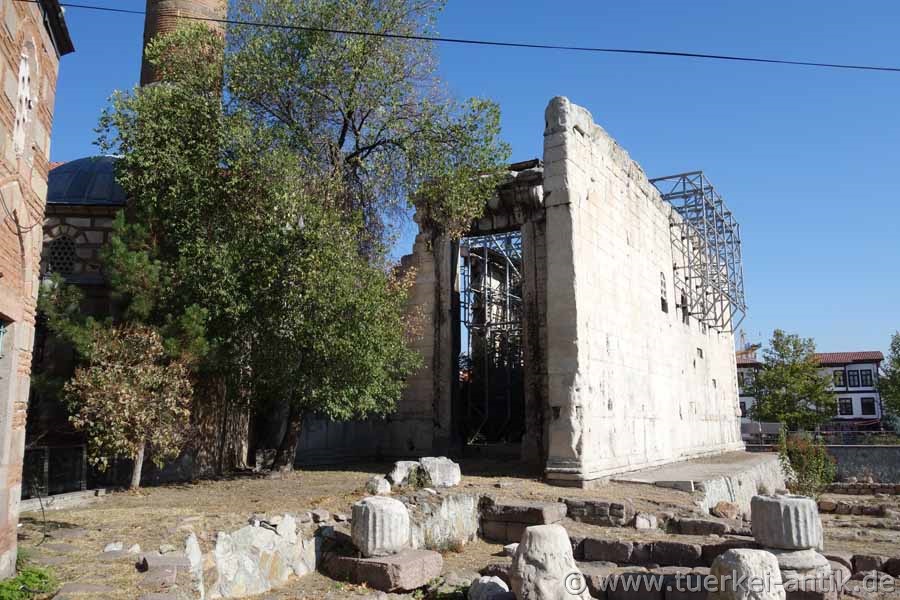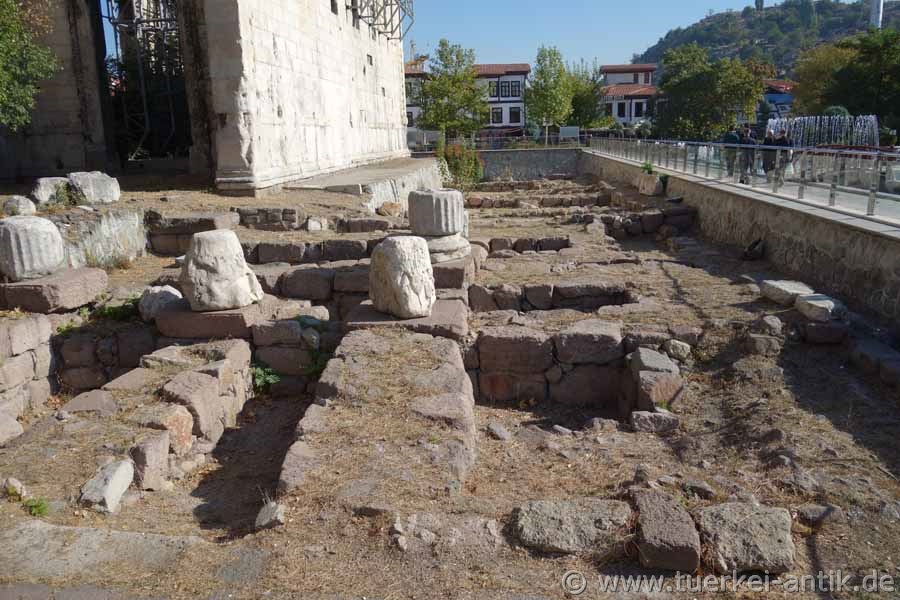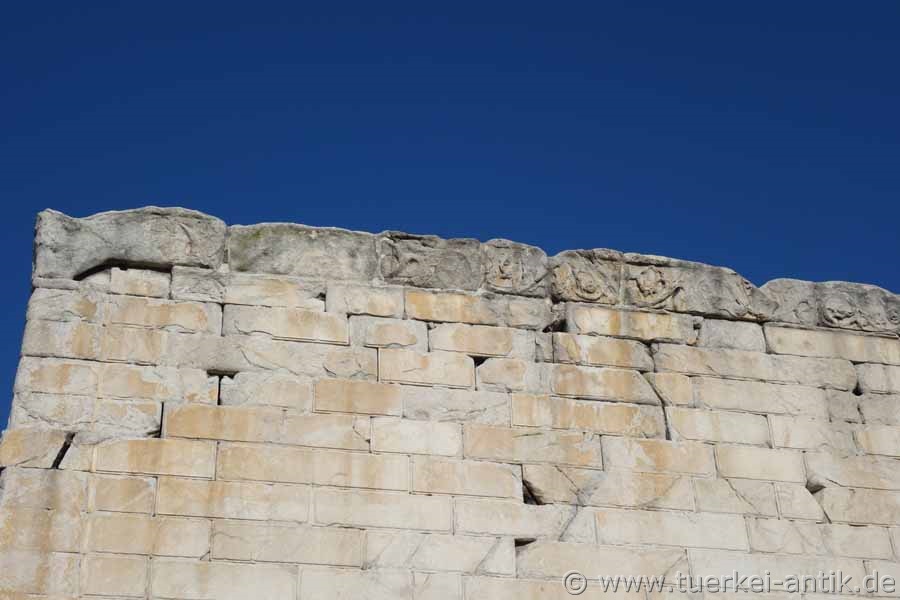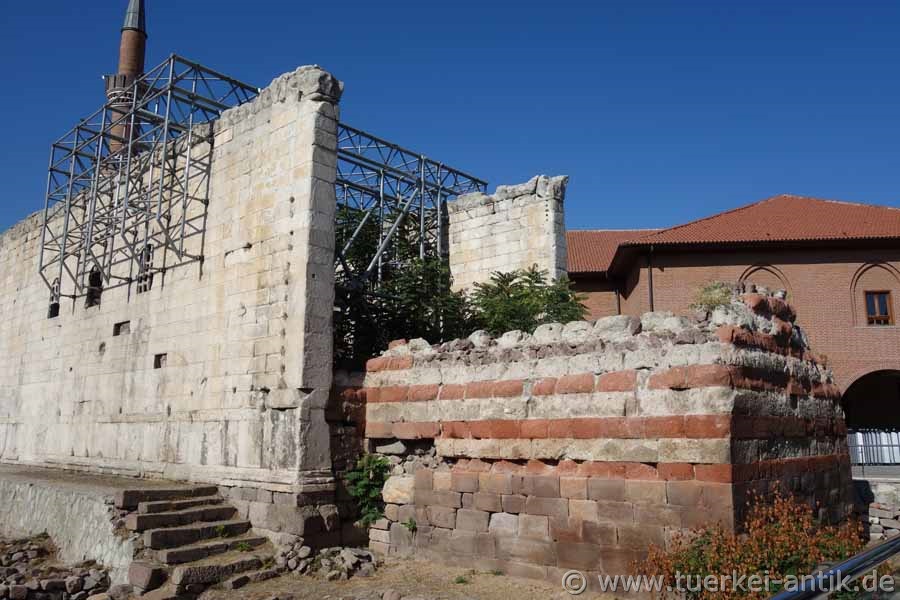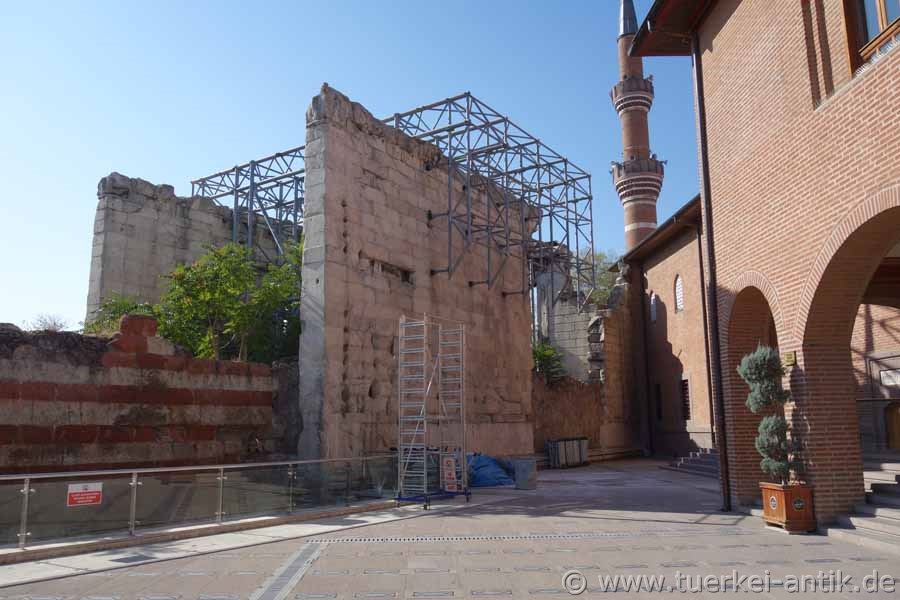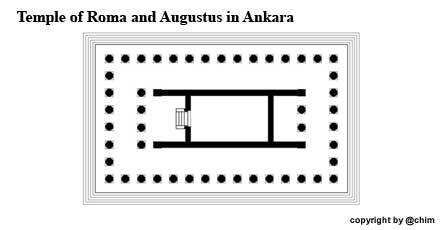|
The temple was dedicated to the cult of the Roman city goddess Roma and deified Augustus. It is known for the only inscription of the Res gestae divi Augusti that has been largely preserved in its entirety,
of the accounts of the first Roman emperor Augustus. According to the location of the temple, the inscription is also called Monumentum Ancyranum.
The temple, built in Corinthian order, has the shape of a pseudodipteros. It is oriented to the northeast and measures about 36 × 55 meters. It stood on a two-metre-high podium with eight steps. In front of the narrow side there were 8 columns and 15 on the long side.
Additionally there were four columns in front of the Pronaos in the southwest and two in front of the Opisthodom. From the Pronaos a decorated portal led into the Cella (interior), which was one metre higher and accessible via four steps.
The windowless room reserved for the priests probably contained a cult image. Today only the side walls of the Cella, 32.5 metres long and almost 12 metres high, have survived.
The Latin version of the inscription can be read on the preserved south-eastern inner wall of the pronaos, the Greek version is on the south-eastern outer wall of the cella.
The building was originally erected in the 2nd century BC as a temple to the Phrygian deities Men and Kybele. After Ancyra became the capital of the Roman province of Galatia in 25 B.C., the temple was rebuilt and dedicated to the cult of the Roman city goddess Roma and deified Augustus.
In the 6th century AD it was rededicated as a church by the Byzantines. The floor of the interior was lowered, the wall between Cella and Rückhalle was replaced by an apse and three windows were built into the southeast wall.
In 1427/28 the Hacibayram Mosque was built at the northwest corner of the temple, whereupon the temple was used as a medrese. |
|
|
In the Roman Empire, Roma was a deity that symbolized the Roman state or city of Rome as a personification. Some temples and holy places were consecrated to her.
Roma was a goddess whose worship as "Princeps Civitatis" ("First among the Cities") was made official by Augustus as part of a propaganda campaign also in the west of the Roman Empire. He thereby gave religious consecration to the Roman concept of state, had a number of temples of the Roma and Augustus erected with his Res Gestae and inscriptions affixed which were intended to popularise the new goddess.
From 121 to 136 Roma was built under the emperors Hadrian and Antoninus Pius together with the goddess Venus on the Via Sacra in Rome with the temple of Venus and the Roma the largest Roman temple at that time. As a result, Roma were accepted among the Roman state gods. |
|
|
Augustus (* 23. September 63 B.C. as Gaius Octavius; † 19. August 14 A.D.) was the first Roman emperor. Gaius Iulius Caesars, grand nephew and principal heir, won the power struggles that followed his assassination in 44 B.C. and was the sole ruler of the Roman Empire from 31 B.C. to 14 AD.
Under the motto of the restoration of the republic - restitutio rei publicae - he in reality pursued its permanent transformation into a monarchy in the form of a principality. Thus he put an end to the century of Roman civil wars and founded the Julian-Claudian imperial dynasty. His rule, outwardly marked by numerous expansion wars, led to a long lasting phase of consolidation and peace, which was glorified as Pax Augusta. |
|

